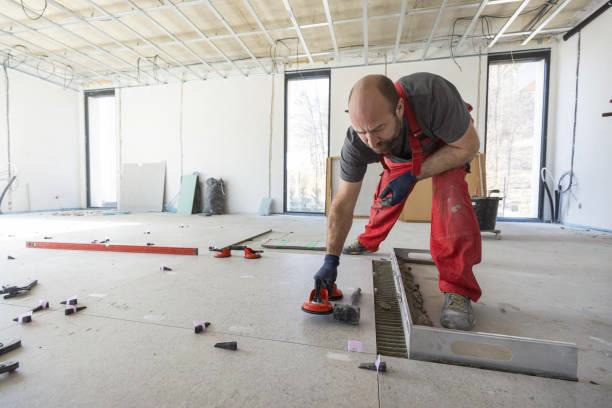When selecting flooring for residential or commercial spaces, safety and durability should always be top priorities. Slip-resistant tiles are essential for preventing accidents, particularly in wet or high-traffic areas like bathrooms, kitchens, commercial lobbies, and outdoor walkways. Anti-slip ratings help determine how well a tile performs in slippery conditions, ensuring compliance with safety standards and reducing the risk of slips and falls. Whether you’re designing a home, retail store, hotel, restaurant, or office, choosing tiles with the right slip resistance classification enhances both functionality and safety.
By understanding anti-slip ratings and selecting the appropriate slip-resistant flooring, you can create a secure, long-lasting, and stylish space that meets both aesthetic and safety requirements.
Wet Pendulum Test
At Kimgres, safety is a top priority, which is why we conduct the Wet Pendulum Test (AS 4586 / BS 7976) to accurately measure the slip resistance of our tiles. This globally recognised test helps ensure compliance with safety standards across residential, commercial, and industrial spaces, providing reliable performance in wet conditions.
How the Wet Pendulum Test Works:
- A pendulum device with a rubber slider is released from a fixed height, swinging across the tile surface.
- As the slider contacts the tile, friction causes energy loss, slowing the pendulum down.
- The amount of energy lost is recorded as a Pendulum Test Value (PTV)—a numerical measure of slip resistance.
- The test is conducted under wet conditions, replicating real-life scenarios where water is present.
Interpreting PTV Ratings (P0 to P5):
- P0 – Minimal slip resistance, not suitable for wet areas.
- P1-P2 – Low to moderate slip resistance, suitable for dry indoor spaces and lowmoisture areas.
- P3-P4 – Good slip resistance, ideal for bathrooms, kitchens, retail spaces, and outdoor areas.
- P5 – Maximum slip resistance, essential for ramps, pool surrounds, wet industrial spaces, and high-traffic public areas.
By conducting the Wet Pendulum Test, Kimgres ensures our tiles meet stringent safety requirements, offering secure and durable flooring solutions for a wide range of environments.
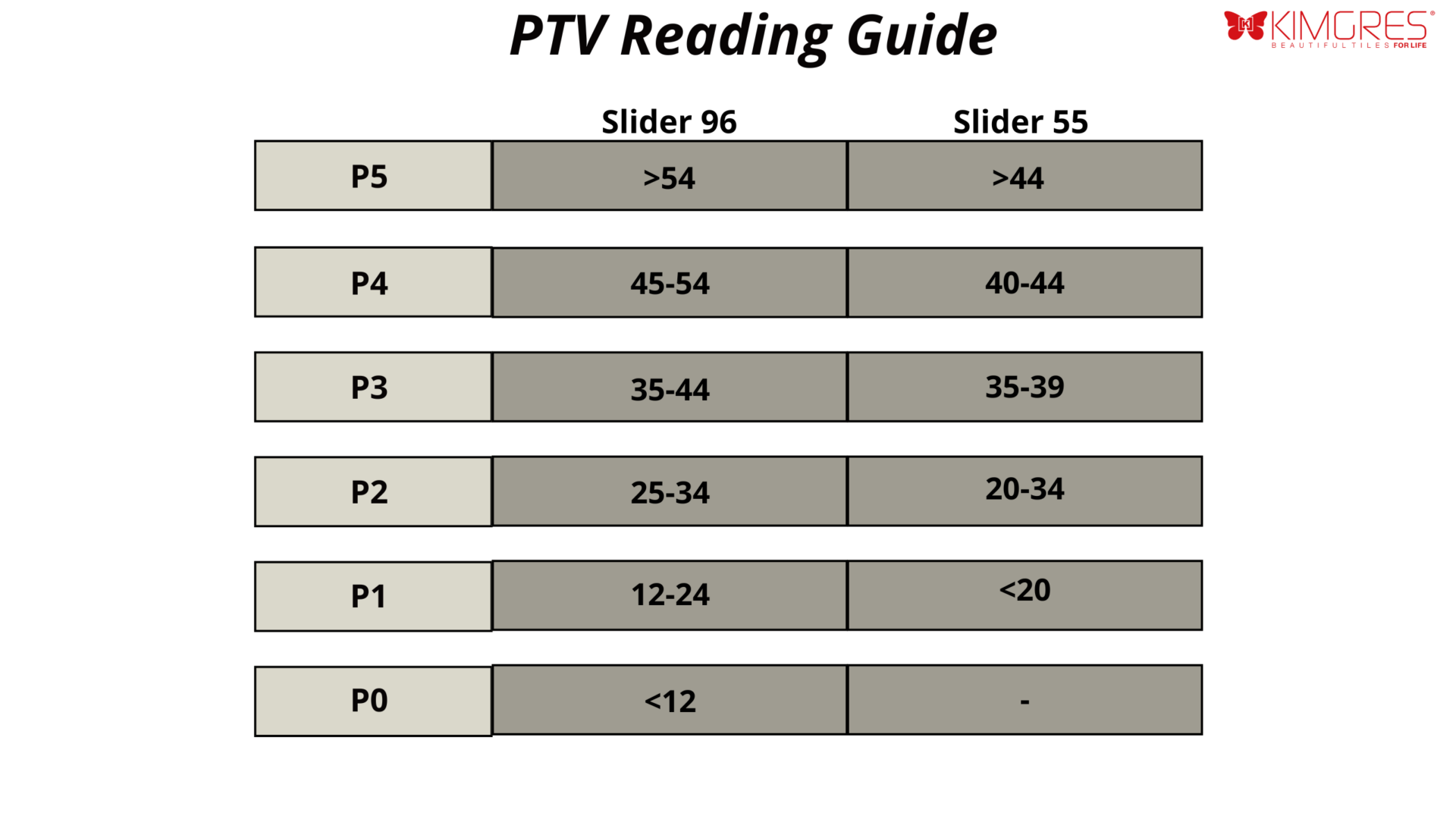
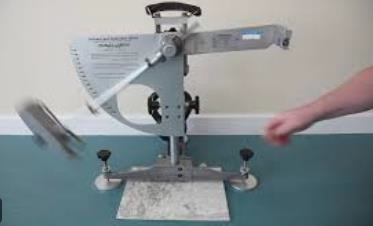

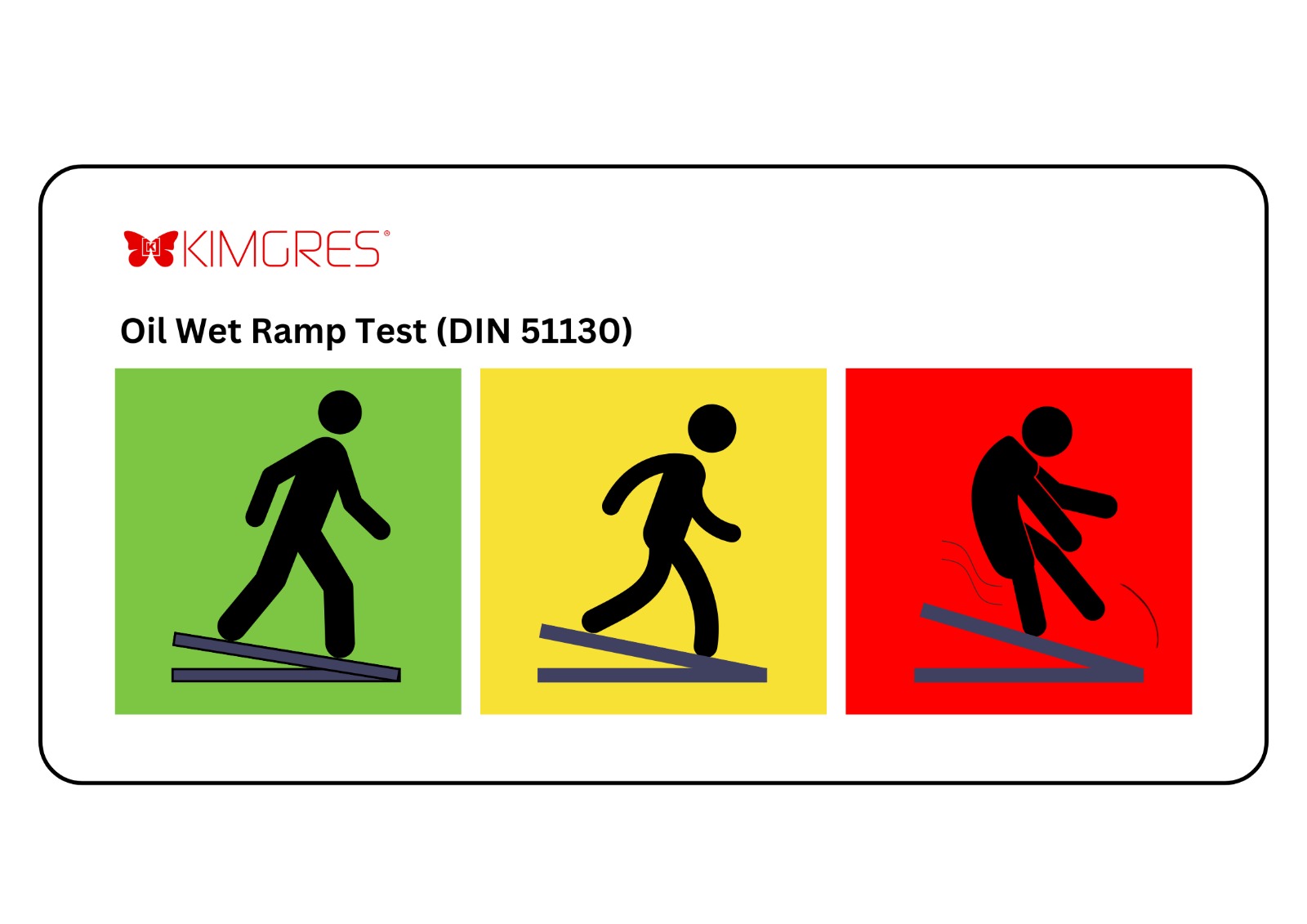
Oil Wet Ramp Test
The Oil Wet Ramp Test (DIN 51130) is a standardised method for assessing a tile’s slip resistance in areas exposed to oil, grease, or other slippery substances. This test is essential for ensuring safety in commercial kitchens, industrial workplaces, and food processing facilities, where maintaining traction is critical.
How the Test Works:
- A test subject, wearing standardised safety footwear, walks repeatedly across a tilted ramp coated with oil.
- The ramp’s gradient is gradually increased until the subject reaches the point of slippage or instability.
- The maximum safe angle before slipping determines the tile’s R-rating, which ranges from R9 (lowest slip resistance) to R13 (highest slip resistance).
Understanding R-Ratings:
- R9 – Minimal slip resistance, suitable for dry indoor spaces such as residential areas, offices, and retail stores.
- R10 – Moderate slip resistance, appropriate for spaces with occasional moisture, such as bathrooms, hotel lobbies, and indoor dining areas.
- R11 – High slip resistance, ideal for commercial kitchens, covered outdoor areas, and workplaces with moderate exposure to oil or water.
- R12 – Very high slip resistance, recommended for industrial settings, food production facilities, and frequently wet environments.
- R13 – Maximum slip resistance, essential for heavy-duty environments like slaughterhouses, industrial food processing plants, and commercial dishwashing areas.
Dry Friction Test (Tortus)
The Dry Friction Test, commonly known as the Tortus Test, is a standardised method used to assess the slip resistance of tiles in dry conditions. This test is particularly useful for evaluating flooring surfaces in indoor commercial and residential spaces where minimal moisture exposure is expected.
How the Tortus Test Works:
- A mechanised device, equipped with a rubber slider, is placed on the tile surface.
- The device moves at a controlled speed across the tile, simulating a walking motion.
- As the rubber slider interacts with the tile, the frictional force is measured.
- The test results in a Coefficient of Friction (COF) value, which indicates how much resistance the tile offers against slipping.
Understanding COF Ratings:
- The COF value ranges from 0 to 1, with higher values indicating better slip resistance.
- A minimum COF of 0.4 is generally required for safe floor tile installation, ensuring adequate grip and reducing slip risks.
- Higher COF values (above 0.6) are recommended for areas with frequent foot traffic or where enhanced safety is needed, such as retail stores, office spaces, and hospitality settings.
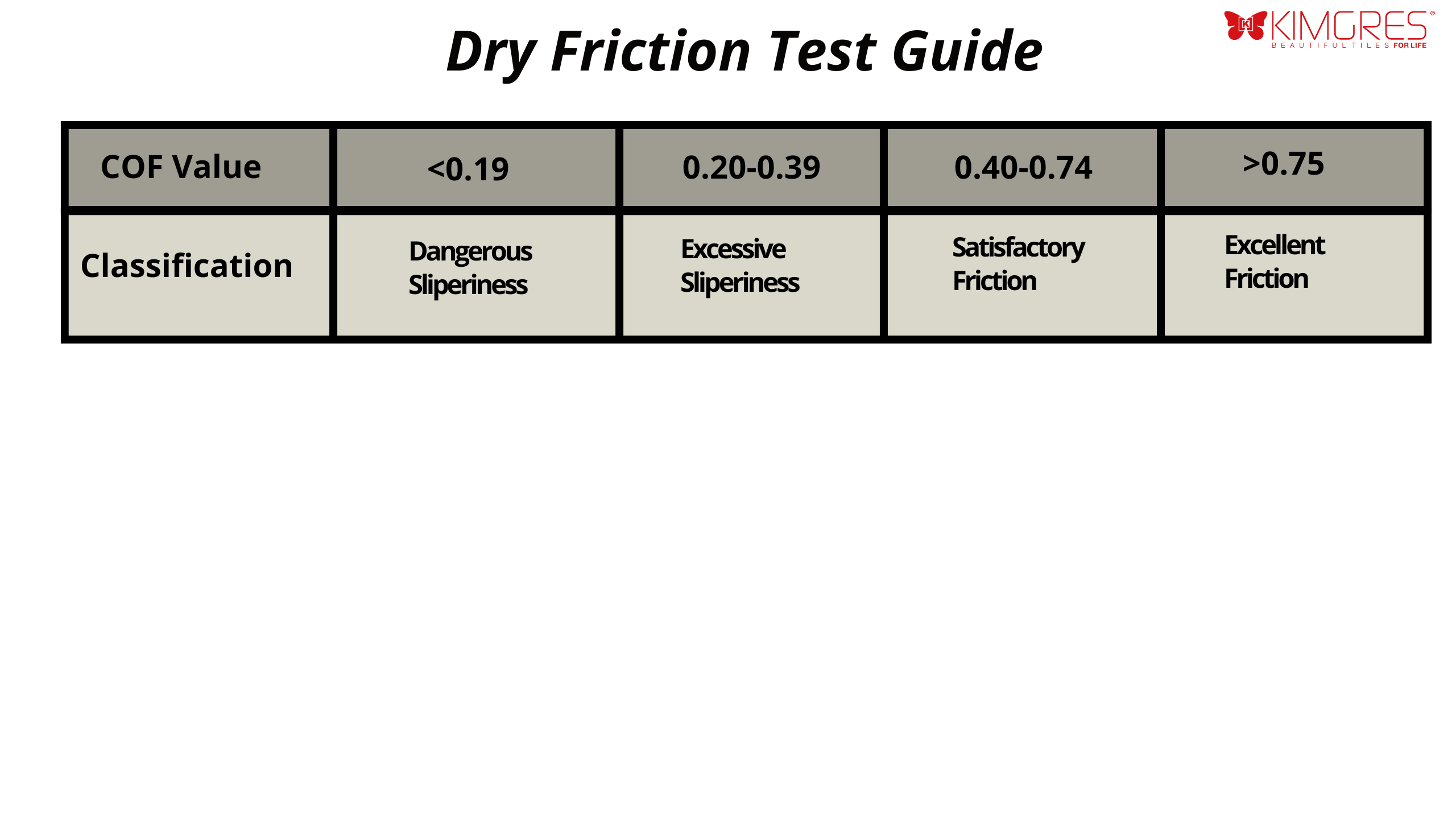
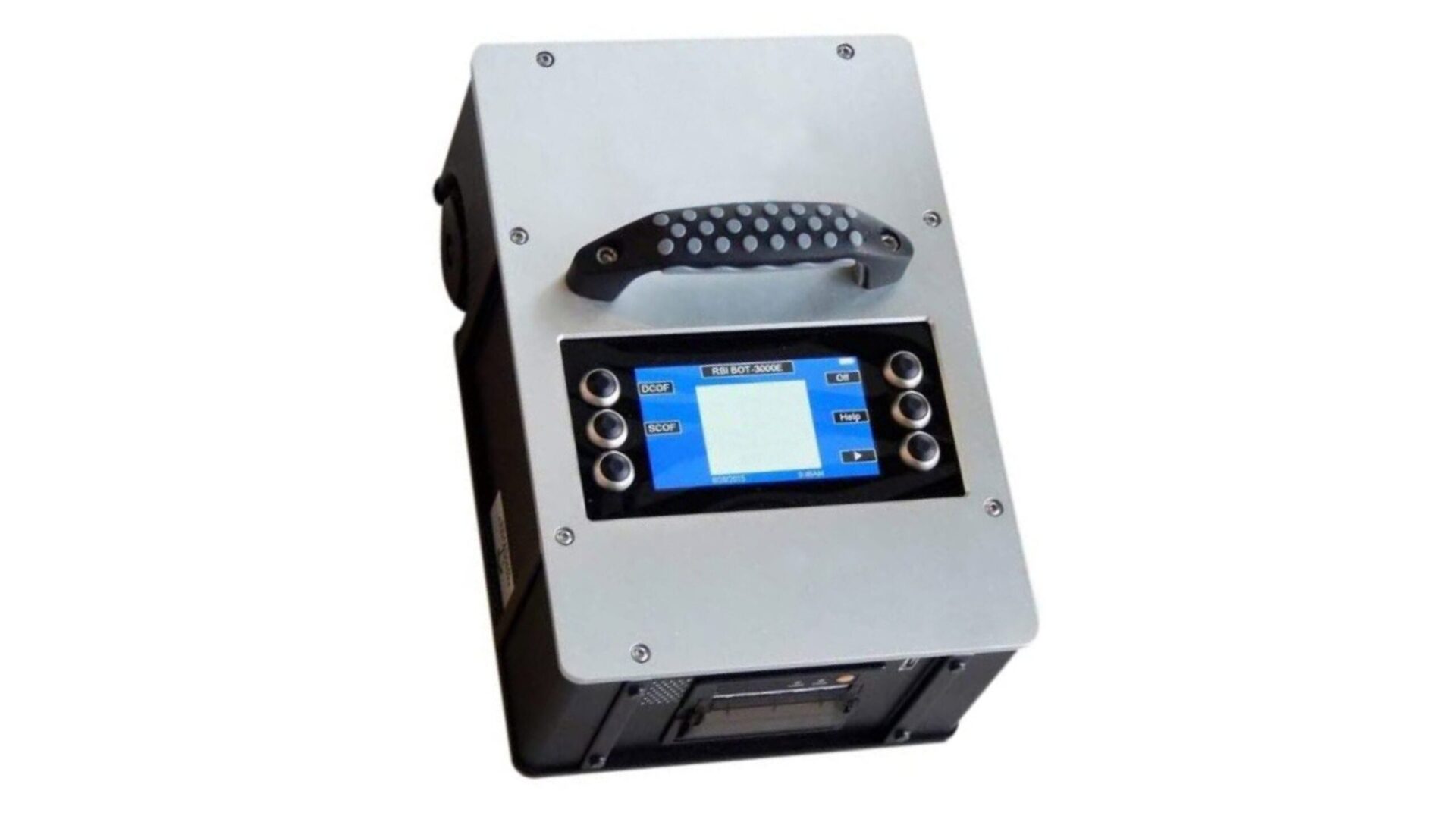

Why Are Anti-Slip Ratings Important?
Safety: The primary reason to choose tiles with appropriate anti-slip ratings is to reduce the risk of slips and falls. Wet areas such as bathrooms, kitchens, and outdoor spaces are especially prone to accidents. Choosing the right anti-slip rating helps create a safer environment.
Regulatory Compliance: Commercial spaces, such as healthcare facilities, restaurants, and retail stores, are required to meet specific anti-slip standards to comply with safety regulations. Meeting these standards helps protect both employees and customers from accidents.
Long-Term Durability: Anti-slip surfaces maintain their effectiveness over time, even in high-traffic areas. Unlike smooth or glossy finishes, which may lose their slip resistance with wear, anti-slip tiles continue to offer long-lasting safety and durability.
How to Select Anti-Slip Tiles for Your Project
Selecting the right anti-slip rating is essential for ensuring both safety and aesthetic appeal in your space. Here are a few guidelines to help you choose the right tiles for your project:
- Residential Projects:
For living rooms, bedrooms, and dining areas, a P2 rating is usually sufficient. These areas are typically not exposed to water or moisture. However, for wet areas such as bathrooms, kitchens, and outdoor spaces, it is recommended to choose tiles with a P3 to P4 rating to ensure enhanced safety. - Commercial Projects:
Commercial spaces, particularly those with high foot traffic, require higher slip resistance to maintain safety standards. - Bathrooms, kitchens, and spas: Choose tiles with a P4 to P5 rating for maximum slip resistance and safety.
- Retail spaces and offices: A P2 to P3 rating provides a good balance between aesthetic appeal and moderate slip resistance.
- Restaurants and public spaces: A P3 to P4 rating ensures the floors meet safety standards while still looking stylish.
-
